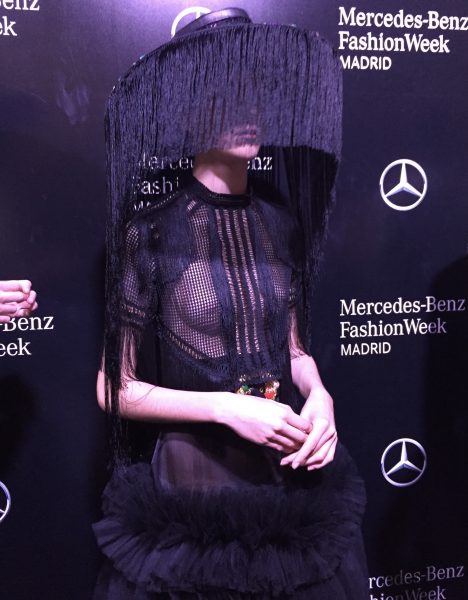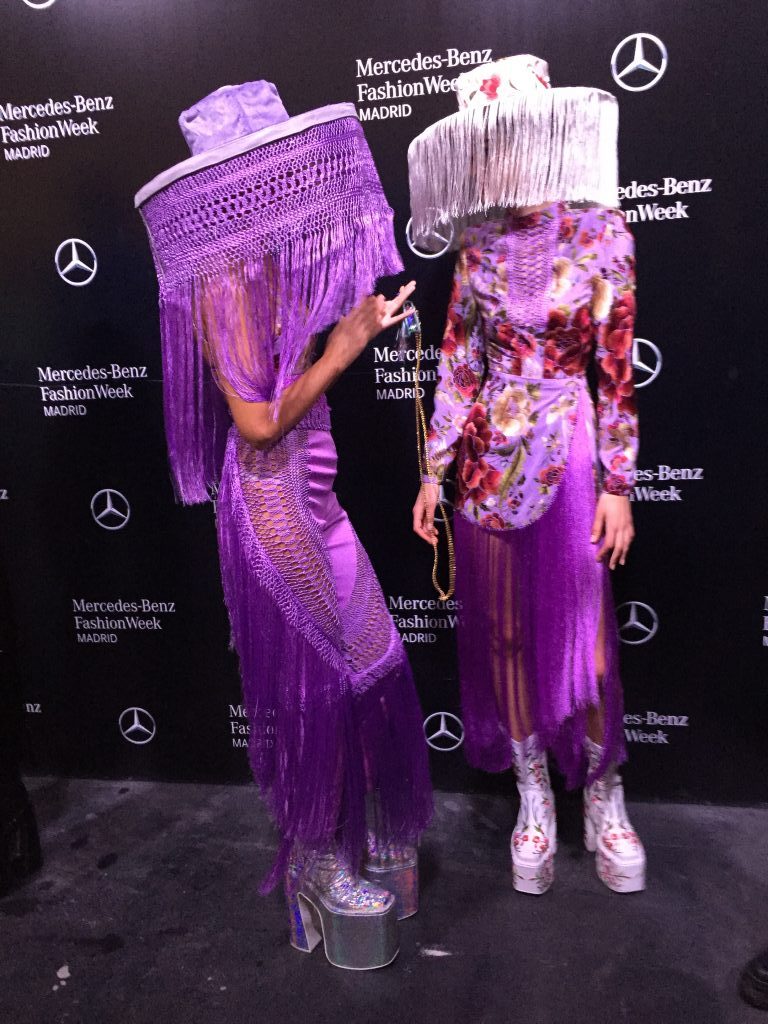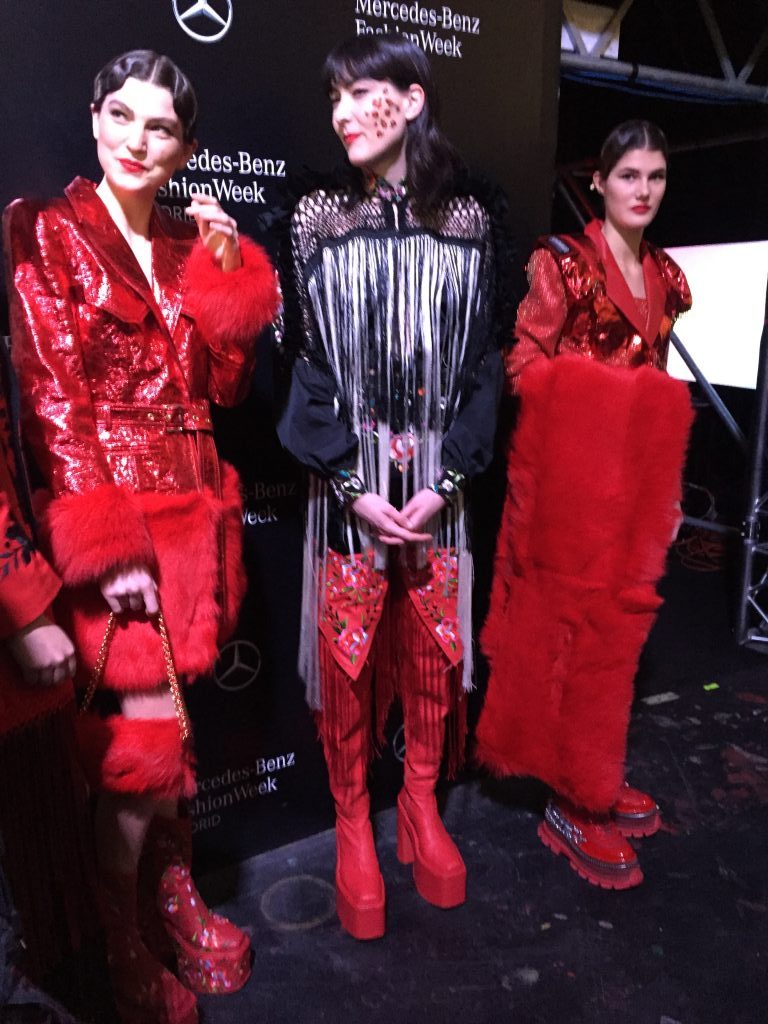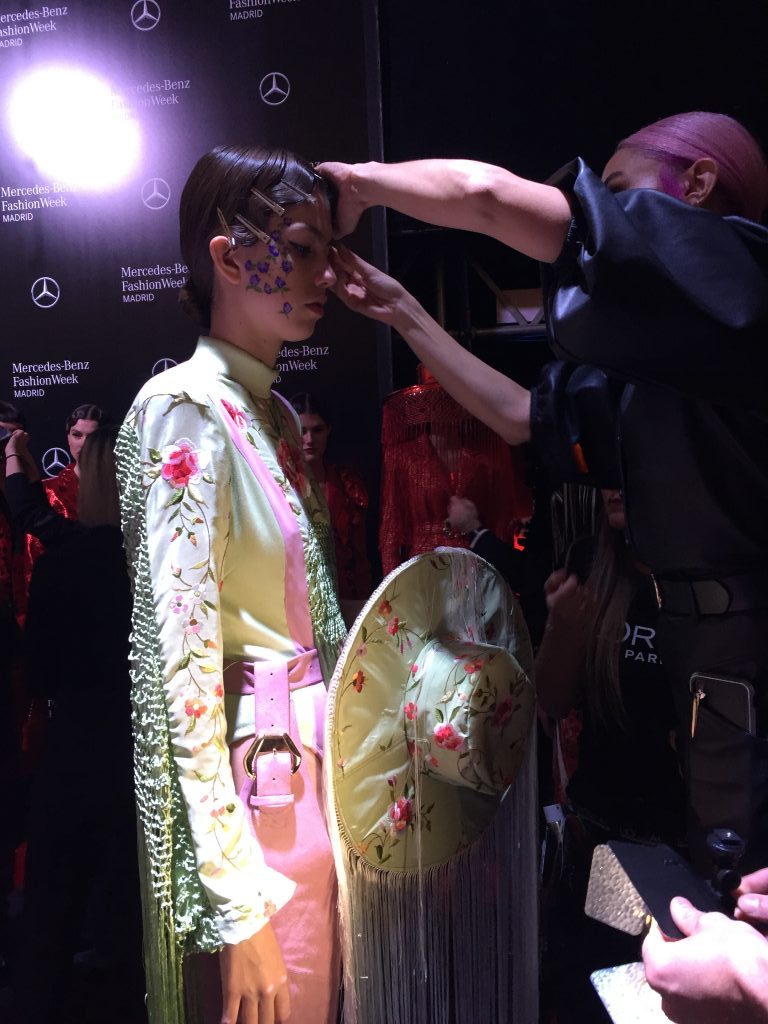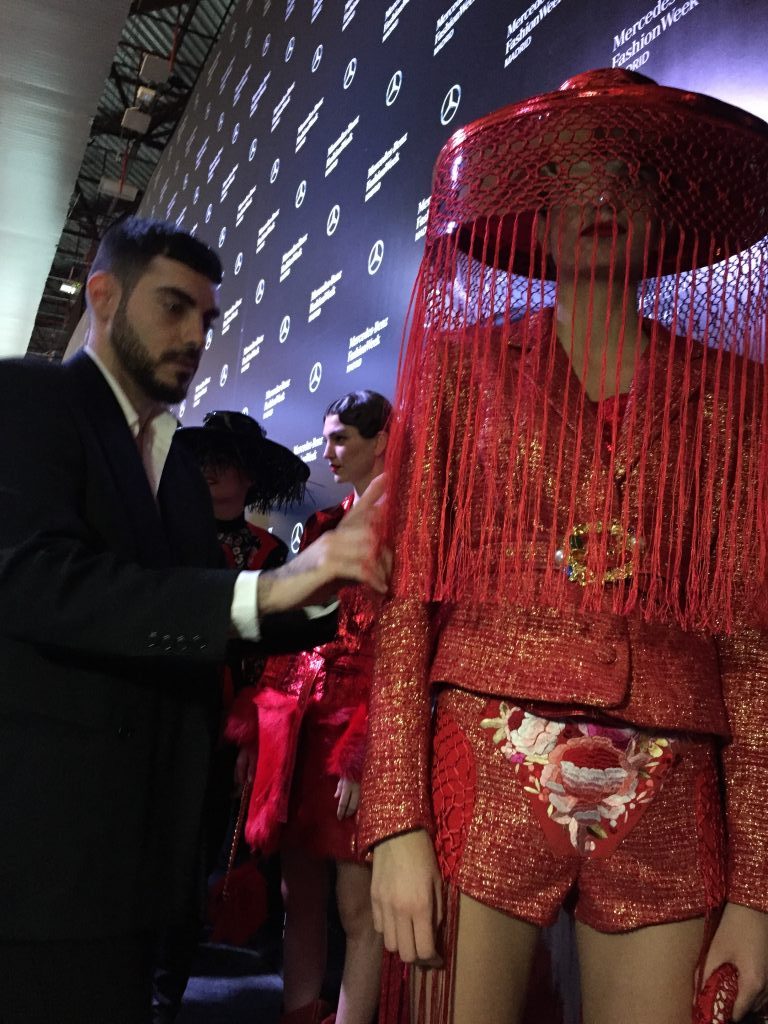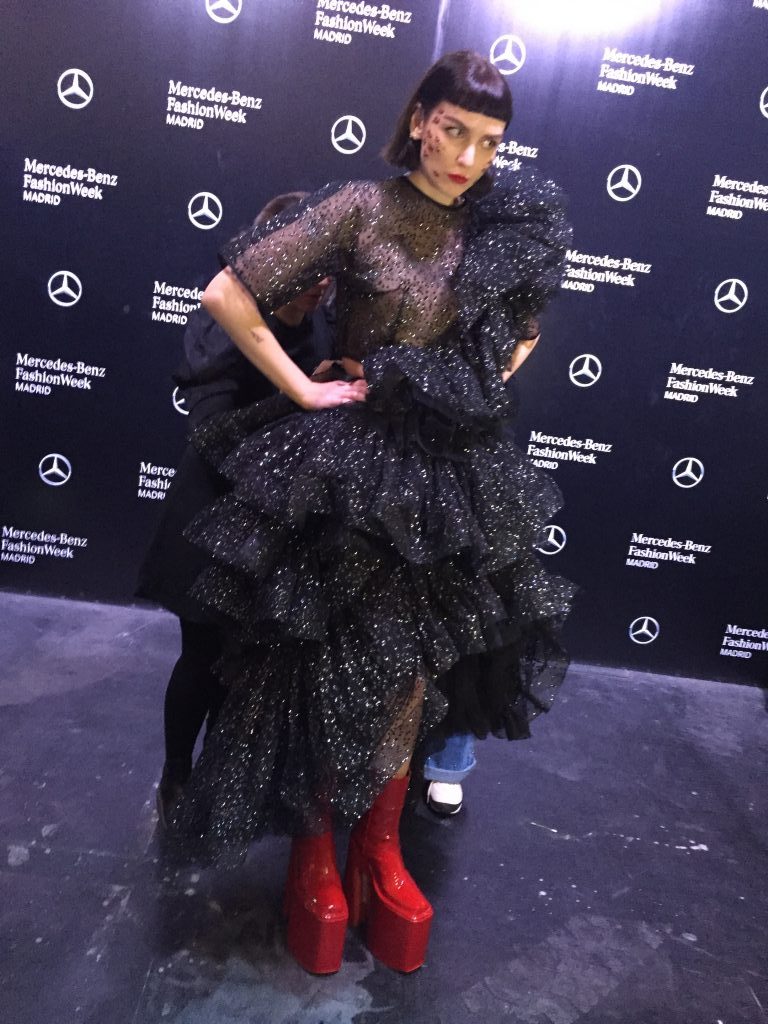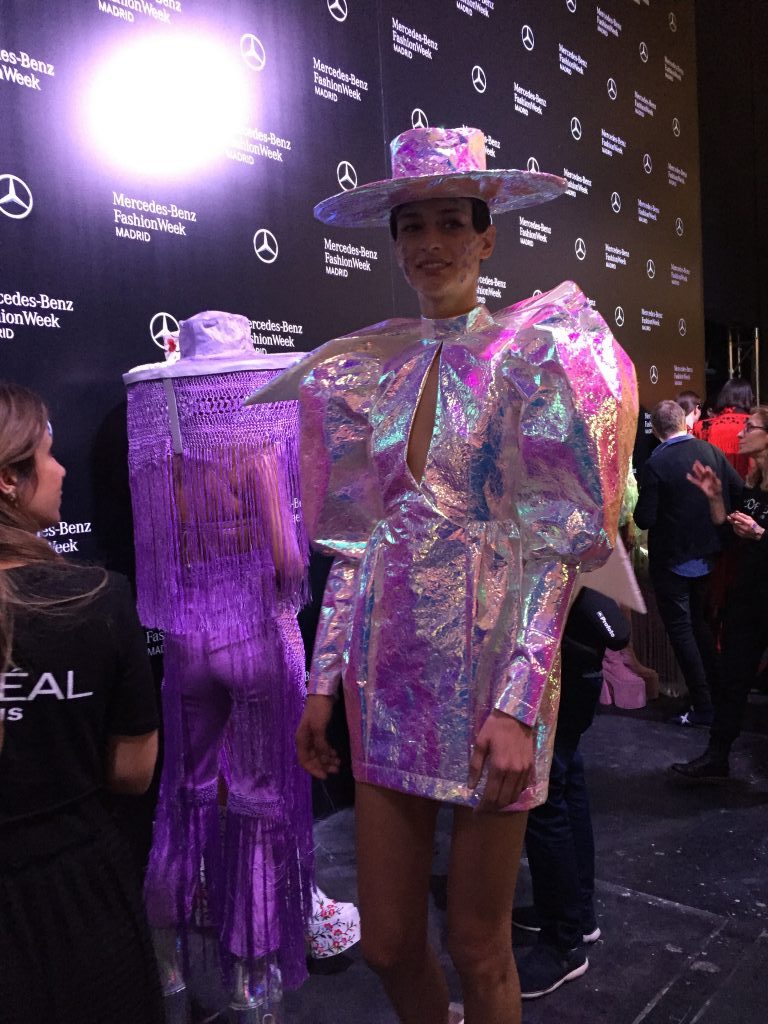FASHION SHOWS, FULL STOP
English / Español
As I was photographing the backstage in Madrid’s runway – Mercedes-Benz Fashion Week a.k.a Pasarela Cibeles – last January, I could not envision, just like everyone all over the world, that barely three months later all would change dramatically, drastically. It is a full stop for fashion shows due to the infamous and highly contagious virus COVID 19.
Lately, I had wondered when I would stop carrying out this visual recompilation of Spanish fashion design, a creative task I have been doing since the runway was set up in Madrid way back last century in 1985. Maybe when I can retire I thought, or maybe simply when I get bored. COVID 19 has decided this for me. So this is my own full stop in a personal photographic archive that has covered Spanish designer fashion for over 30 years and has become suddenly past history. This is the only certainty I know.
Fashion as we know it has become irrelevant, superfluous. A new fashion guide has to be written, blank pages have to be filled with a new vision and a new story related.
It is definitely also full stop for fashion shows as we knew them, no matter how nostalgic one may feel, hoping and praying that it may be a pause and “things” will eventually return to “normal”. The reason is quite simply that the impact the global health crisis has had in society, in real people, is huge, life-changing.
The last months have been momentous for me, for you, for all. Madrid, London, Paris, Milan, New York, all the leading fashion cities are facing the same query, where do we go from here? What happens next? Digital tools seem to be the logical answer to replace fashion shows, but who wants fashion shows?
What do fashion have to give society in this post-COVID 19 era?
We must remember that fashion is pure sociology. The many related businesses in fashion – fashion designers, fashion brands, retailers, cool fashion media, and prescribers, have been reflecting through garments the changes in society for centuries. This new era we have just abruptly stepped into will be defined by a new society that is arising, radically different from the one we knew, and they will write the new norms for the new fashion guide.
It is time to break every single fashion rule and listen to what real people want from fashion because fashion is certainly a creative industry, but it is nevertheless a business whose main aim is to sell clothes.
Resounding words are design, sustainable, digital, local, artisan, the adjective disruptive should be added before them, what made sense before just doesn’t uphold anymore.
There is no magic wand to make this all disappear and the future fashion is facing has never been so uncertain. It seems unreal, but reality has certainly bitten the sector in a hard way. However, fashion through its creative input has always found a way of connecting with the aesthetic codes that society requires.
The questions we should be asking ourselves are: is it really necessary to create seasonal collection 6 months in advance? Do local designers have to present their collections/products all at the same time? Trend, what trend? How are the fashion media and prescribers going to adapt to the new era? And above all what does society want, where are they going to buy fashion and how are you, designer, brand, or retailer, going to reach out, engage and establish a dialogue with society? How is fashion design going to be relevant in the new sociological order?
I really don’t know, but I am ready to face these questions and talk about the elephant in the fashion room, are you?
The pics illustrating this post are from young fashion brand Domennico currently runner up in Spanish Vogue’s Who’s On Next Competition sponsored by INDITEX, Designer Domingo Rodriguez Lázaro has also created wardrobe styles for global music icons Rosalía, Lady Gaga, and Rita Ora.
To be continued…
